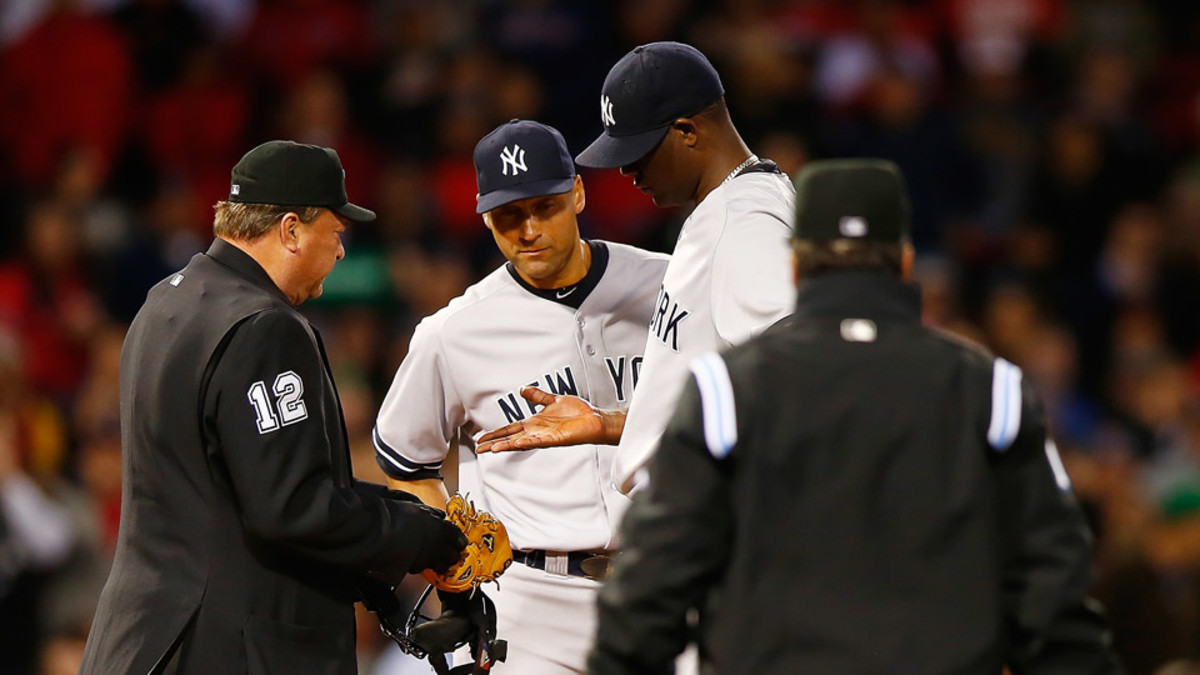Of Pine Tar and Physics: A Scientist's Take on Pineda's Explanation
It might have been a stretch for Yankees righthander Michael Pineda to say that the reason he has been using pine tar to help his grip on these cold April nights is because he doesn’t want to hit anyone. Chances are Pineda—who was caught with a liberal amount of the substance slathered on his neck on Wednesday night at Boston’s Fenway Park—was more concerned with hitting opposing bats than players.
What’s not a stretch for Pineda to say is that pine tar helps his control.
“With the cold weather, the ball feels very slick and it’s hard for the pitcher to get a good grip,” says Alan Nathan, Professor of Physics Emeritus at the University of Illinois. “So it’s hard for a pitcher to get a good grip on the ball to snap off a ball with a good amount of spin on it, regardless if it’s a breaking pitch or a fastball with movement. Spin results in movement, so creating friction between the fingers and the surface of the ball, the seams or the white part of the ball, is very important.”
Nathan, who blogs about the physics of baseball, said that he truly believes Pineda—and many pitchers in baseball—use pine tar only for grip. But it’s not out of the question that the substance could be used in other ways.
“Taken to an extreme, putting a foreign substance like pine tar on the ball can do more,” Nathan says. “It can affect the trajectory. It can give the ball unexpected movement. I doubt that is what was going on, but a real glob of pine tar could make the ball move a lot. But that would be hard for a pitcher to get away with. In the hands of a reasonably skilled pitcher, a lot can be done when the ball is loaded up.”
Verducci: Second pine tar incident embarrassing for Michael Pineda
Corcoran: MLB should legalize pine tar for pitchers
Keith: Possible Pineda suspension could cause problems for Yanks
And it’s not just sticky stuff that hitters have to be aware of.
“There can also be an advantage when a pitcher uses a lubricant,” Nathan says, “to make the ball more slippery. Lubricant helps a pitcher take spin off the ball. The reduced spin on the ball, like a well-thrown split-finger fastball, makes it drop more. The backspin on a pitch keeps it in the air longer. So putting lubricant on the ball can reduce spin.”
Maybe that’s something to look for as the weather turns warm.





